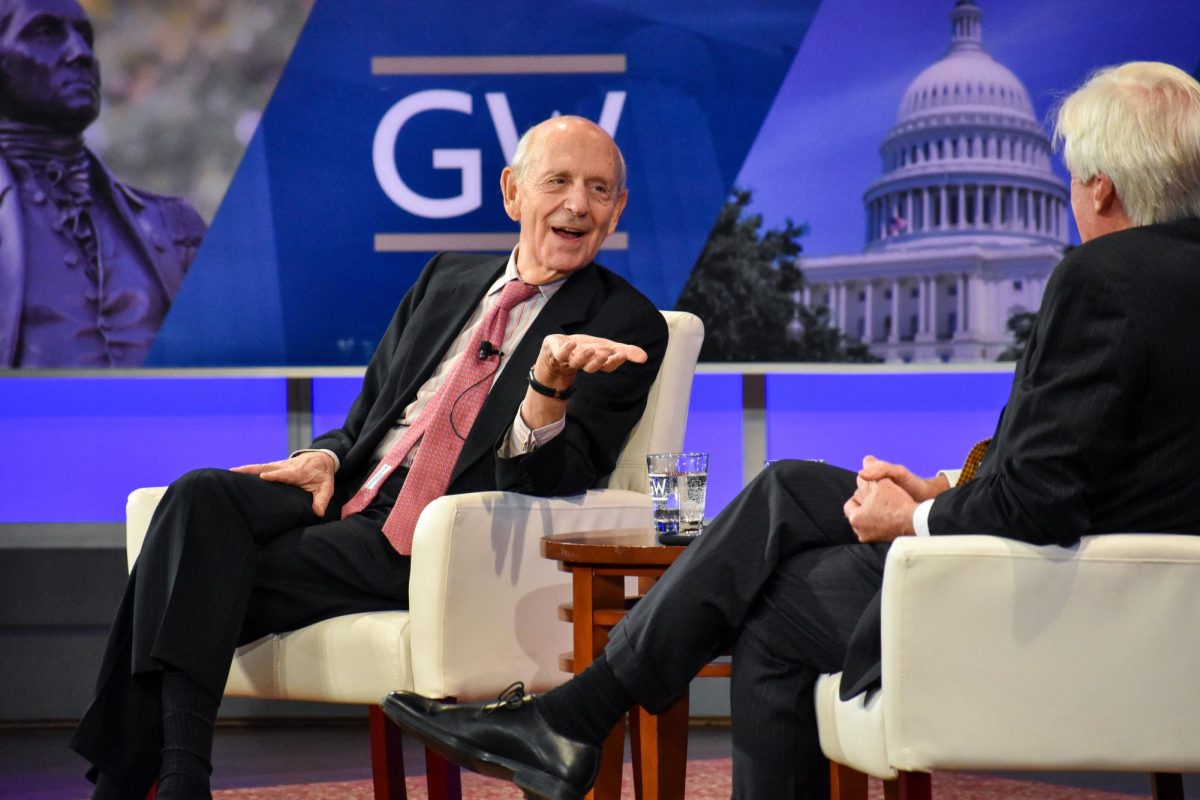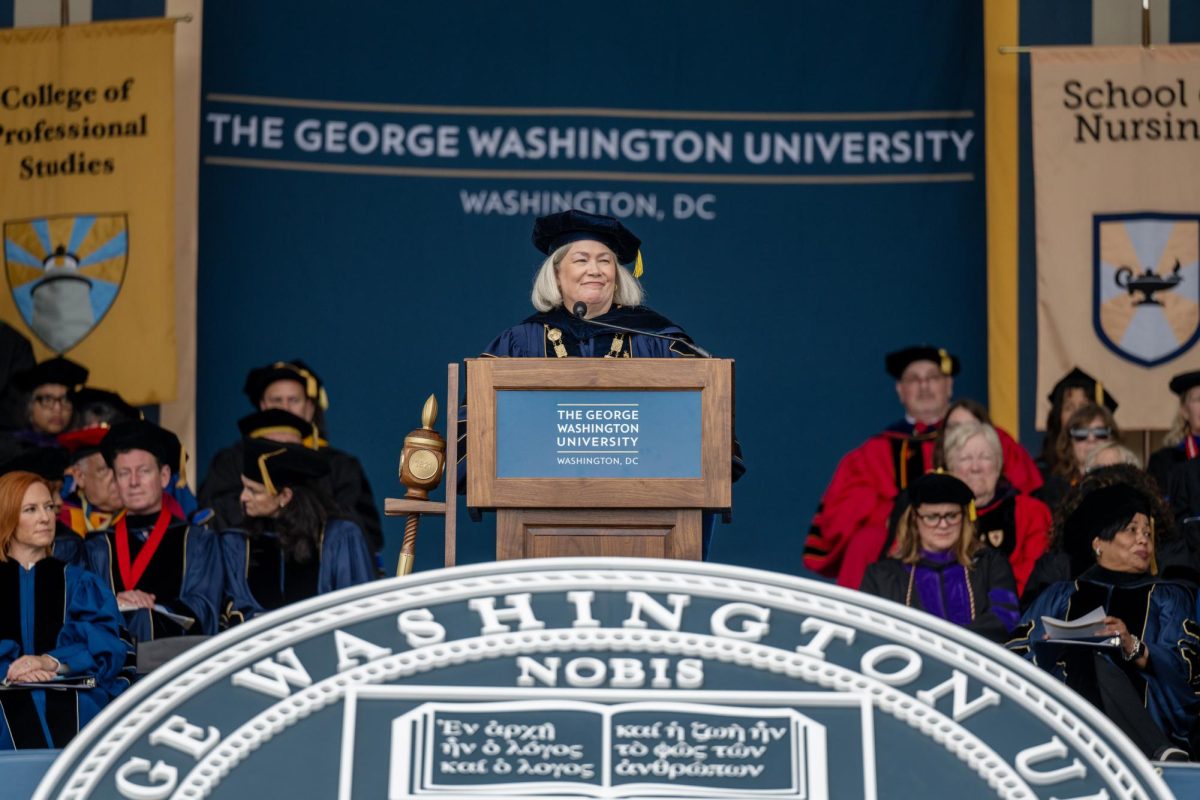Former Supreme Court Justice Stephen Breyer spoke about his tenure as a federal First Circuit Court of Appeals judge and the power of diverse perspectives in the judicial system at the School of Media & Public Affairs Wednesday.
Breyer said his experience in federal courts and as a member of the U.S Sentencing Commission, which Congress formed in the 1980s to solve federal sentencing discrepancies, taught him the value of listening to differing perspectives, the importance of community and the power of the judiciary. His conversation with intellectual property law Professor Robert Brauneis, who used to serve as his law clerk, is the fourth installment of a five-part series chronicling Breyer’s life and career.
Breyer said former Sen. Edward “Ted” Kennedy (D-MA) recommended then-President Jimmy Carter nominate him to the First Circuit Court in 1980 because of his work with Kennedy as chief counsel of the Senate Judiciary Committee. Breyer said becoming a judge was “ideal” to advance his career.
“It’s a good job,” Breyer said. “People who are judges, they feel pleased in the country to be part of the system of justice. It’s highly idealized, but it’s true.”
Following his appointment to the First Circuit, Breyer said he had to deepen his judicial skill set despite previous legal and political experience. He said he learned the power of listening in aiding comprehension of differing arguments for lawyers and judges.
“What you should do as a person, whether you’re a lawyer or not, is listen to the people who disagree with you,” Breyer said.
Breyer said judging proved the judiciary’s power to ensure every person gets the same treatment, which is why he said founding fathers like Alexander Hamilton thought it was essential to have an independent judiciary.
“The most popular person is entitled to exactly the same justice as the least popular person,” Breyer said.
As Chief Judge of the First Circuit from 1990 to 1994, Breyer helped oversee the design and construction of John Joseph Moakley United States Courthouse, which now serves as the headquarters of the First Circuit. He said the area in Boston he chose as the site for the courthouse had “W rizz” because of the influx of development following the courthouse’s construction. Breyer, who is 85, said he has accumulated a vocabulary of slang from his granddaughter.
“She, as she has been known to do, gets up in the middle of dinner and walks to the middle of the dining room and starts doing her ballet or something, and you say no, that is not appropriate,” Breyer said. “What you say is that is ‘bombastic side eye.’”
Breyer said his experience as a circuit judge exposed him to diverse perspectives that he carried with him when he moved to the Supreme Court. He also said he benefited from hearing the perspectives of other justices with different experiences.
“It’s not such a bad thing to have people who differ in their points of view,” Breyer said. “Because somehow this law, the constitution, has to first and foremost allow these 334 million people to live together in a world that is peaceful, respecting each other’s views, and as prosperous as we can get it. And that’s why diversity is not such a terrible thing.”











